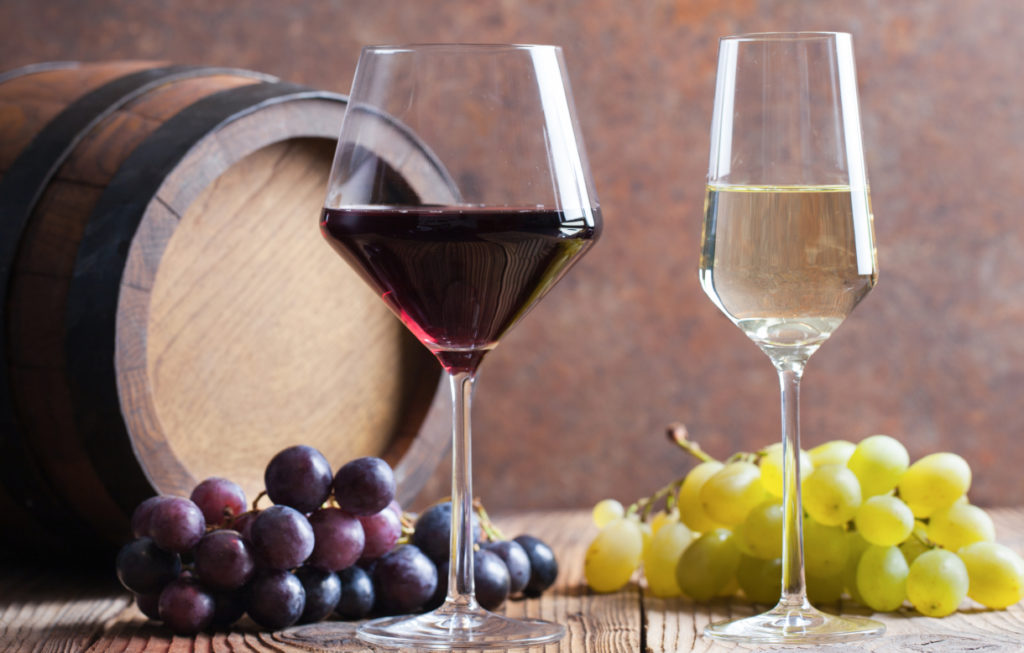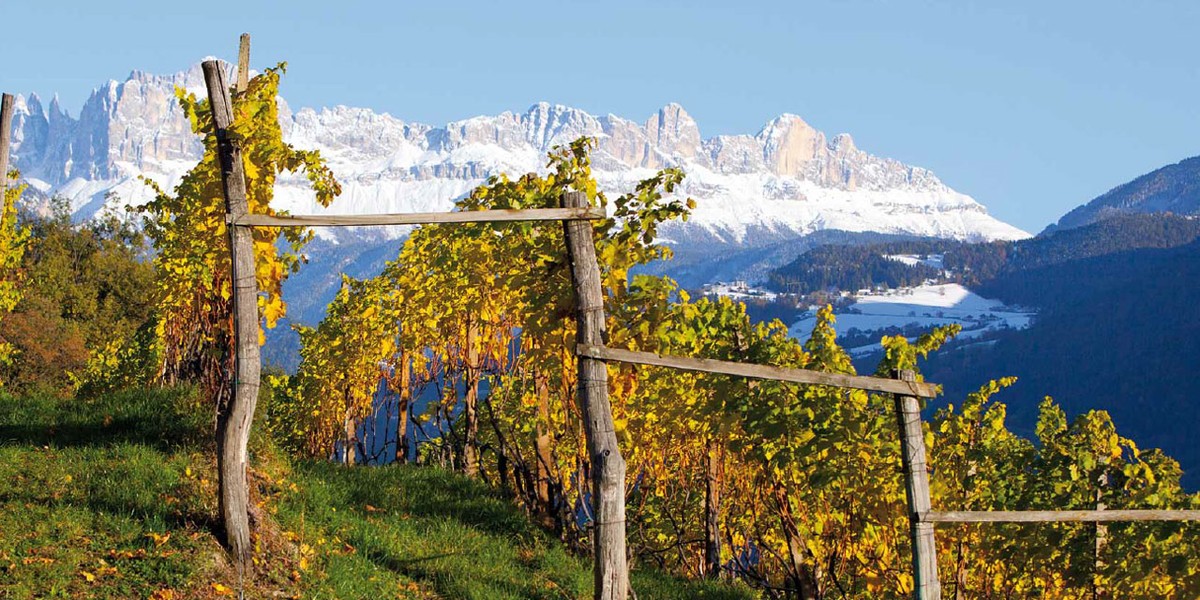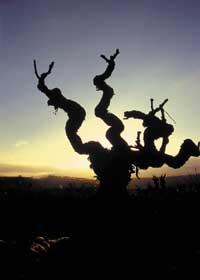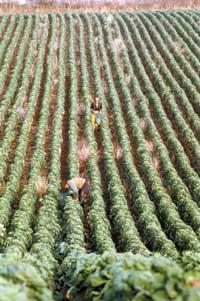Climate change and viticulture. CAF-Elhuyar 2021 (special mention of the Neiker Prize)
2021/04/27 Helene Sanchez Zelaia

We have often heard from older people “tomatoes that we were children, how good!” The way to grow and cultivate fruits and vegetables has a great influence on the taste, but in addition, the current tomatoes are not the same as the tomatoes that were grown 30 years ago: they are not for themselves worse, but other variants. Pests and diseases are the daily bread for farmers and one of the strategies adopted to reduce phytosanitary products to use against them is the selection and planting of resistant plants [1]. In this sense, in the last 40 years several genetic improvement projects have been developed in research centers, among whose successes are the resistant varieties that are currently planted [2].
Surely within a few years something similar with wine will happen to us, it will seem to us that the wine we drank as young was much better and we will not lack reason. But in this case the reason will not be genetic, but induced by climate change.
The climate, lost north
It is known that the animals of the North Pole are suffering the harsh effects of climate change, as many of us have seen images illustrating this phenomenon. For example, the progressive increase in temperatures causes the thawing of sea ice, which polar bears need to hunt and obtain food, and the survival of the species is in danger [3]. However, animals are not the only ones who suffer the effects of a progressive increase in the average temperature of the earth, since in the kingdom of plants it is evident the influence of the increase in temperature.
Two major climate changes are expected in the future over the next 50-100 years. On the one hand, an average temperature increase of 1.4 to 3 °C in winter and 2.5 to 5 °C in summer. In any case, it will vary according to the region and the rise will be stronger in the northern hemisphere. In addition, the research carried out does not fully coincide with the forecasts. On the other hand, a heterogeneous distribution of rainfall or precipitation is expected, that is, the rainiest times are expected to be autumn and winter, and spring and summer, the driest. Even so, this effect is expected to increase more and plants that bloom in spring and summer generate water stress. In addition, extreme weather situations will be more frequent, such as very intense and specific rains [4].
Effects on viticulture
The example of grapes is especially significant, since wine making is a very concrete science, and temperature and climate have a great influence on both the aromatic profile of the final wine and its color. For the production of wine it is necessary to have a quality grape, being the parameters that most influence the quality of the grapes the maturation of phenolic compounds, the balance between sugars and acids and the availability of a healthy grape.
Phenolic compounds define important sensory characteristics such as color, body, astringency and bitterness of wine. These molecules are synthesized through secondary metabolic pathways and appear in barks and seeds during grape ripening, such as tannins and anthocyanins. Anthocyanins are natural plant pigments that protect the plant from ultraviolet light and facilitate pollination, among other things, in addition to giving color to red wine. Tannins, however, are related to stress response and plant defense system, and are molecules that provide astringency to wine. Tannins and anthocyanins reach the maturation of aromatic compounds and are closely related, so it is important that a suitable phenolic maturation occurs both in red and white wine.
In plants, sugars are essential molecules, as they supply energy to the plant to fulfill the basic functions. In general, in edible fruits, the accumulation of sugar in the ripening process determines the sweet and the quality of the harvest [6].
In today's wine market, the growing demand for wines with a wide variety of expressions of color, aromatic complexity and large volume conditions the work of farmers and winemakers, who require proper phenolic ripening: they need brightly coloured wines so that aromatic compounds express their full potential. Therefore, defining the timing of harvest is one of the main wine decisions, especially in quality wines [7].
Several investigations have confirmed the trends of recent years and the suspicions of farmers: the warming of the land has allowed to advance the date of the harvest [5]. This directly influences the above, since what advances the increase in temperatures is the accumulation of sugar, but not the maturation of phenolic compounds, which depend on radiation or light rays. The most interesting thing about a wine is that these two ripening processes are carried out in a coordinated way, that is, that phenolic ripening occurs with the ripening of sugars and vice versa. At present there is an imbalance between the mature of these two groups of compounds, destroying the perfected by evolution for long years [8].
In order to cope with this phenomenon that is currently occurring in Rioja Alavesa and other regions, winegrowers must make one of the following decisions: collecting the grapes early and maintaining an adequate alcohol content and acidity, but producing wine without flavor or color; or picking the grapes late, obtaining aromas and colors of interest, but, in addition to reaching excessively high alcoholic degrees, increase the risk of disease and deterioration of the grapes [7]. Therefore, you have to choose between white or black, there is no gray.
Climbing the slope, facing the situation
In this situation, there are two bets worldwide. On the one hand, adopt the necessary measures to curb or slow down the warming effect and stop the springs causing this phenomenon. On the other hand, achieving the capacity to manage the consequences of climate change [4].
Among the strategies that fall within this second bet is the search for new locations for grape cultivation. These new locations may be cooler regions of another latitude, but also the higher-altitude slopes, where the temperature is usually lower. Other strategies focus on genetic improvement and the selection of suitable plants, that is, those that better adapt to the new situation. There are strategies that focus on the efficient and beneficial development and management of the vineyard, or that resort to corrective oenological processes, which are used when the effort made in the vineyard has not been enough to obtain a quality raw material [4].
Climatic studies show that the changes observed in recent years will continue in the future and will not only reduce the quality of grapes and wine, but will change the patterns of diseases and pests, change the yields of the vine and cause changes in the phenology of the vine [4] [9]. This explanation has been just one of the faces of climate change, which can be tasted to be better understood.
SOURCES
[1] Alvarez M., Moya C. Florido M., Plan D. 2003. Results of the genetic improvement of tomato (Lycopersicon esculentu Mill.) and its impact on horticultural production in Cuba. Tropical crops, 24 (2): 63-70.
[2] Perez de-Castro A., Ten M.J. 2013. • 25 years themes (pytoma).
[3] Polar Bears International. 2021. Hunting & ecosystem. https://polarsinternational.org/climate-change/hunting-ecosystem/
[4] García-Escudero E. 2013 – ACE, Revista de enología científica y profesional.
[5] Ruan Y.L. 2014 Sucrose metabolism: gateway to diverse carbon use and sugar signaling. Annual Review of Plant Biology, 65, 33–67.
[6] Look at Orduña R. 2010 Climate change associated effects on grape and wine quality and production. Food research international, 43(7):1844-1855.
[7] Melendez E., Related information C.P. Sarabia Mª Íñiguez, pure P. 2013 Modelling phenolic and technological maturities of grapes by means of the multivariate relation between organoleptic and physicochemical properties. Analytica Chinica Acta, 761: 53-61.
[8] Brandt M., Scheidweiler M., Rauhut D. Related information Will F., Pagn H., Stoll M. 2019. The influence of temperature and solar radiation on phenols in berry skin and maturity parameters of Vitis vinifera L. cv. Riesling. OENO One, 52 (2)
[9] Bonfante A., Monaco E., Langella G., Mercogliano P., Bucchignan E., P. Manna, F. Terribilla 2018. A dynamic viticultural zoning to explore the resilience of terroir concept under climate change. Science of the total environment, 624:294–308.

Gai honi buruzko eduki gehiago
Elhuyarrek garatutako teknologia




_2_display_home.jpg)
_display_home.jpg)



